“Great Rifle US Drama” (Rifles by countries and continents - 4)
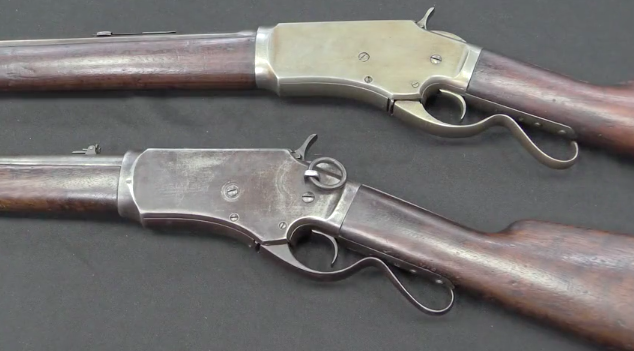
Carabines "a la winchester" - "Wheatley-Kennedy."
These were rifles and carbines with lever brace from firms such as Bollard, Burgess, Colt Lightning, Wheatley-Kennedy and Marlin. But none of the samples of these firms in the US Army did not get! However, this failed to become the legendary "hard drive". It was sold to Indians and cowboys, but the soldiers of the United States Army had to be content with a single-shot springfield carabiner with a folding gate. And all because the American army in those years was very poorly funded. Well, and the laws of competition were such that Winchester himself removed any competitors from his path. Here, for example, what story happened with the rifles of Orville Robinson, a gunsmith from the state of New York, who developed two rather interesting projects shortly after the end of the Civil War. True, both rifles he designed were shot with revolver cartridges, and also had tubular stores. However, the originality cannot be denied to them. The first of them (1870 model of the year) looked very much like a “hard drive” - the same massive brass bolt box and a barrel-mounted “lever”, but in reality it was just a curly bracket. The rectangular bolt was pushed back with the help of a pair of grooved “legs”, which had to be squeezed with the fingers and thereby wedged it out. Before that, the trigger was cocked, and when he struck the striker in the bolt, he jammed these legs and the inner wedge, and the bolt was firmly held in its place. Simultaneously with the retraction of the bolt back, another cartridge was fed from the store and placed on the feeder, which lifted it to the dismounting line. On the side there was a cover that slid down and closed the opening for loading cartridges into the magazine.
Orville Robinson rifles: at the top of 1870, at the bottom - 1872,
The 1872 rifle of the year had a shutter very similar to the shutter of a “parabellum” pistol from a folding system of levers that was operated manually using a small knob with a round knob on the right side of the receiver. Again - the trigger cocked, then the shutter was raised, and the next cartridge was fed. There was also a door on the side, but now she was leaning back on the hinge.
Both rifles, it seems, had great prospects, so the company "Winchester" bought Robinson's patents in the 1874 year. After that, the production of rifles of his design was immediately stopped; no one wanted to have a rival rifle with a lever mechanism. It is not known whether Ferdinand Mannlicher saw when he was in America one of the 1870 rifles of the year, but the ideas embodied in it could well serve him as the basis for an early sample of his own rifle 1886 of the year.
That is, on the one hand, the Americans had a wonderful “Winchester” and its “relatives”, but the army did not like all this, because the military preferred single charge. Well - that was their right, but surprisingly, they overlooked an excellent sample that was already at their fingertips, and nevertheless, not received distribution. This is a rifle William Palmer, for which he received a patent back in 1863 year.

The carabiner of William Palmer.
Palmer's carbine was the first model of a firearm of such a system adopted by the US Army. Firstly, it was a weapon with a longitudinal sliding bolt, and secondly, under a metal cartridge. It was produced in Windsor, Vermont, by Lamson and Co., and there were relatively few of them released before the end of the war - there were only a few 1001 copies, and they did not get into the army, but were kept in the New York arsenal until 1901, after which they were sold into the hands of one private merchant.
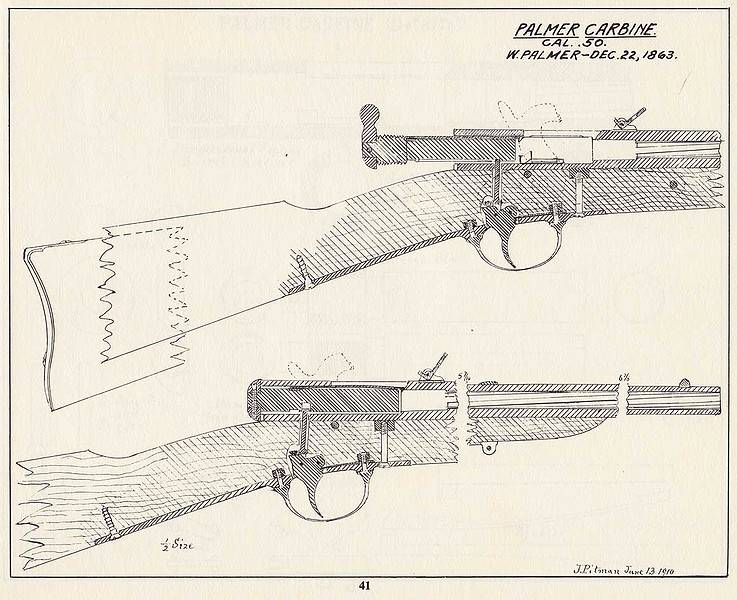
Diagram of the device shutter carbine Palmer.
The carbine was very durable and reliable. To put it into action, it was necessary to pull the trigger back, then turn the bolt handle a quarter of a turn up and pull it toward you. The shutter had in the back of the two protrusions with thread and the corresponding protrusions with thread were on the slide frame. The bolt when moving back removed the cartridge case, and the spring ejector - an innovation for that time, threw it out! It remained to put in the window of the bolt .56-50 a cartridge of side fire from the Spencer carbine, and put the bolt in place by turning its handle a quarter of a turn down.
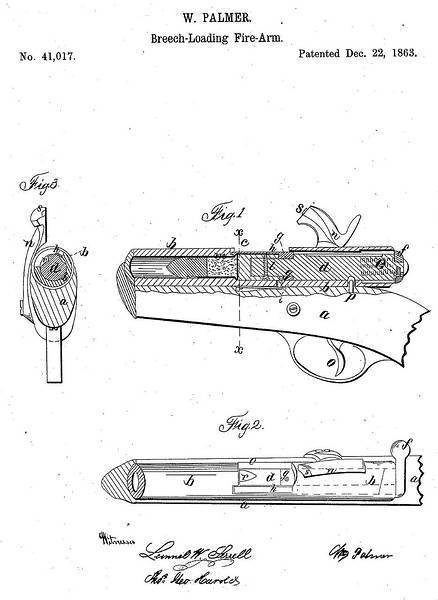
Diagram of the device Palmer carbine from the patent 1863 g.
The trigger through the oblique hole in the breech of the bolt hit the rim of the cartridge and that was how the shot went. When the barrel was unlocked, the trigger simply did not fall into this recess and could not hit it. On its basis, an excellent rifle could turn out, including a magazine rifle, but that did not happen, that did not happen!
Carabiner Palmer with a closed bolt and a flat trigger.
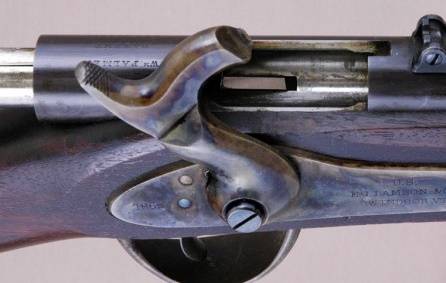
Palmer's carabiner with an open shutter (ejector plate visible) and cocked.
Here, however, it should be remembered that the bulk of the infantry of the US Army during the war of the North and the South was not armed with carbines and “Henry's gun”, but with a capsule rifle of the 1861 model of the year - that is, single-shot and very traditional weapons loaded from the barrel. The fact that for such a technically advanced country as the United States is an anachronism, everyone understood - congressmen and the military. But ... so they did not dare to replace it with something more modern. That is, they were solved, but for some reason, the main task was to use the traditional paper cartridge used in the new rifle, which the soldiers themselves should glue and assemble.
Talk about what “needs to be done,” went before the war, and it was here that James Durell Green came on the scene, who in 1857 tried to convince the US Arms Commission that the rifle he designed was suitable for army weapons. And convinced! As a result, he received an order to manufacture a small batch of his rifles. However, the designer considered that he was underestimated and moved to Europe, where in 1859, he received an order from the Russian government.
18 February 1862 of the Year Green received a new patent in the United States Patent Office under the number XXUMX for an improved model of his rifle. And this weapon turned out to be so unusual that it would be necessary to tell more about it here.
First of all, I must say that Green intended to make a rifle for a paper cartridge with blasting ignition and a cylindrical butterfly valve. The main problem in rifles with the breech breech open at the back was gas breakthrough back - no seals helped here! And in order to avoid this, Green came up with a completely unique two-pulse system in which the role of a compactor was to play ... a second bullet!
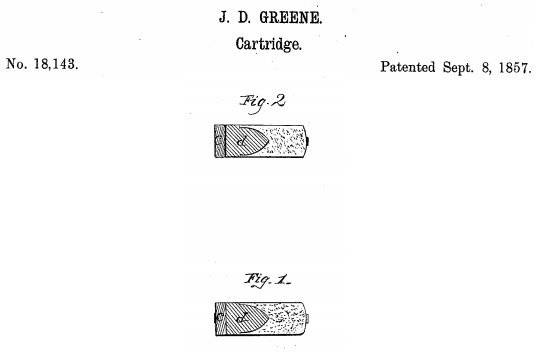
Green rifle cartridge on the patent 1857 g.
The device of the rifle was as follows: inside the receiver there was a bolt with a cylindrical channel along its axis. A steel rod (the so-called “small ramrod”) was placed in the canal, which could move forward from the bolt and push the bullet into the chamber. In the back of the gate, however, there was a handle, with which it turned from left to right, which achieved locking of the breech breech, and the same ramrod moved with the same handle. The shutter was locked with two opposing warheads, which, when turned, it mated with the receiver, entering into its transverse grooves. Trigger and impact mechanisms were under the receiver. It seems to be simple, is not it? But loading a rifle with such a “simple” mechanism required a lot of work and even ingenuity!
Green rifle.
The loading of the rifle was carried out in two steps. First, it was necessary to press the button behind the bolt on the bed, release it, then turn the bolt on the handle from right to left, and pull it back. Now, if you fired for the first time, you had to insert a bullet without a powder charge into the receiver window. After that, using the same handle, push the “small ramrod” forward from the shutter, which is in the rear position, and push the bullet into the chamber, until it stops. After that, the “small ramrod” had to be moved back and the second part of the charge was inserted into the chamber, that is, a bullet with a powder charge located in front of it. Now, the shutter had to be moved forward all the way forward, and its handle should be turned from left to right. Now the bolt was locked and it was necessary only to fold the trigger down and put the cap on the brand tube. When the hammer strikes the cap, the hot gases burned through the shell of the cartridge and ignited the charge. The bullet of the Minier system, located in front of the charge, expanded, entered the grooves and flew out of the barrel. The second bullet rested against the bolt, expanded and thereby provided the obturation.
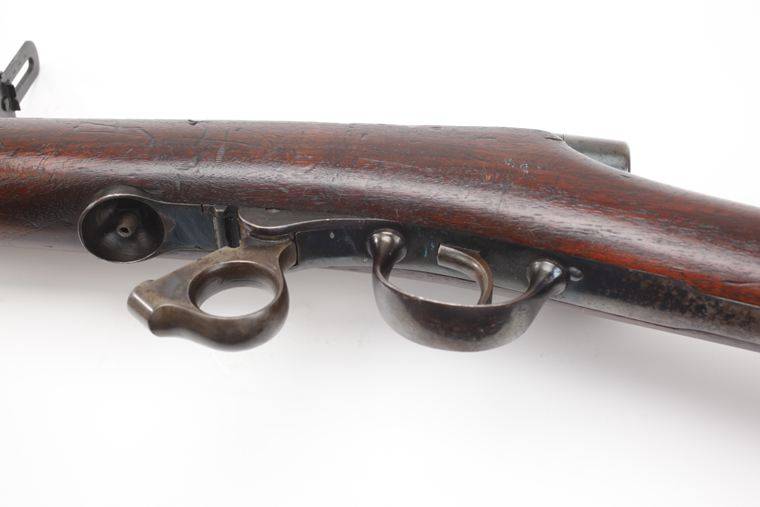
Green's rifle and trigger tube.
Green rifle in the process of loading.
Then the fun began! To reload the rifle it was necessary to work again with the “small piston” and push the bullet further into the chamber. Then a new cartridge is loaded into it, and the process is repeated, with each bullet of a “gas seal” serving as the next bullet for a shot. That is, if you finished shooting, you should remember that one bullet remained in your chamber or in the barrel. And here it was necessary to decide - whether you leave it there before the new shooting, or you have to remove it with a ramrod.
The design of the Green rifle according to 1862.
The rifle caliber was 13,72 - 13,5-mm, length - 1530 mm without a bayonet and 1980 mm with a bayonet. Weight - 4300 g. (4650 g with a bayonet). The initial speed of the bullet was 405 m / s.
The production of a new rifle was adjusted at the enterprise of A.G. Waters in Milbury, Massachusetts, with more than 4500 rifles being produced. In the process of testing, it turned out that the caps with primers at the lower location of the brand tube were often dumped, that it was very difficult to unload the rifle, while the “gas seal” was not always effective and strongly depends on the quality of the metal from which it was cast.
In 1863, 900 Green rifles were purchased by the US government. But the largest order was made from Russia in the 1859 year - 3000 dragoon rifles. However, just in Russia they didn’t succeed and didn’t have very soon. The modified model of the M1863 of the year was acquired by Serbia. She was supplied with 12000 Green rifles, with which she suffered during the war with Turkey in 1876.
According to historians of the weapons of Stuart Morah and Joe Pouleo, Green's rifles participated in the uprising in Lithuania in 1864. But this and all that is known about their combat use.
To be continued ...
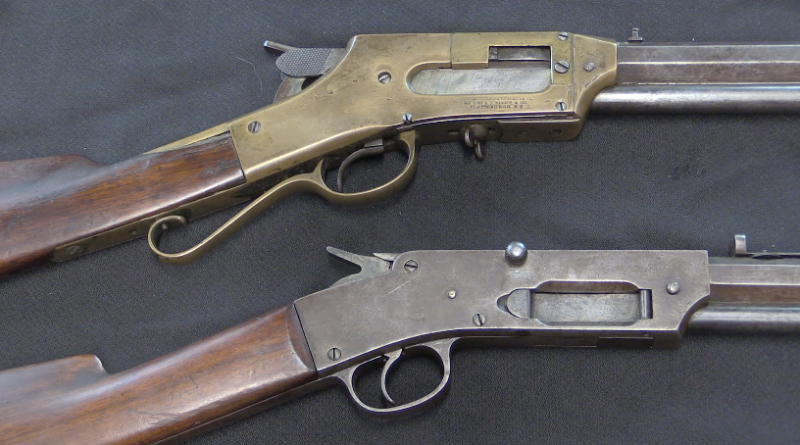
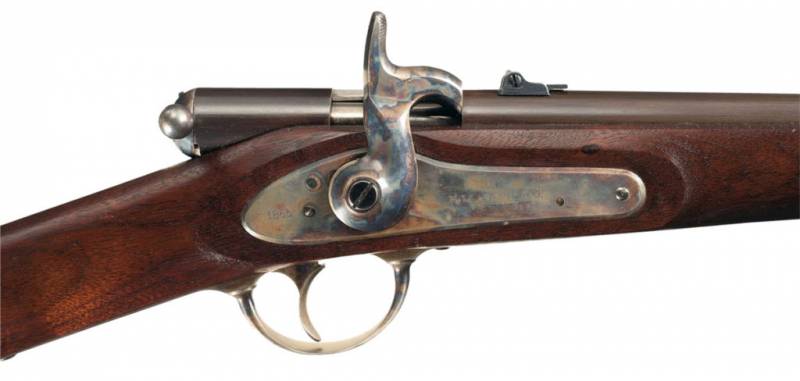


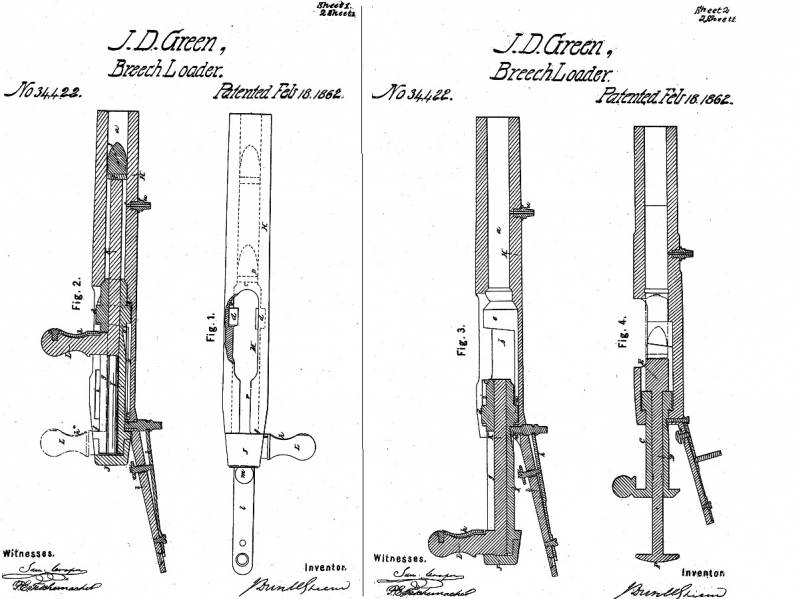
Information